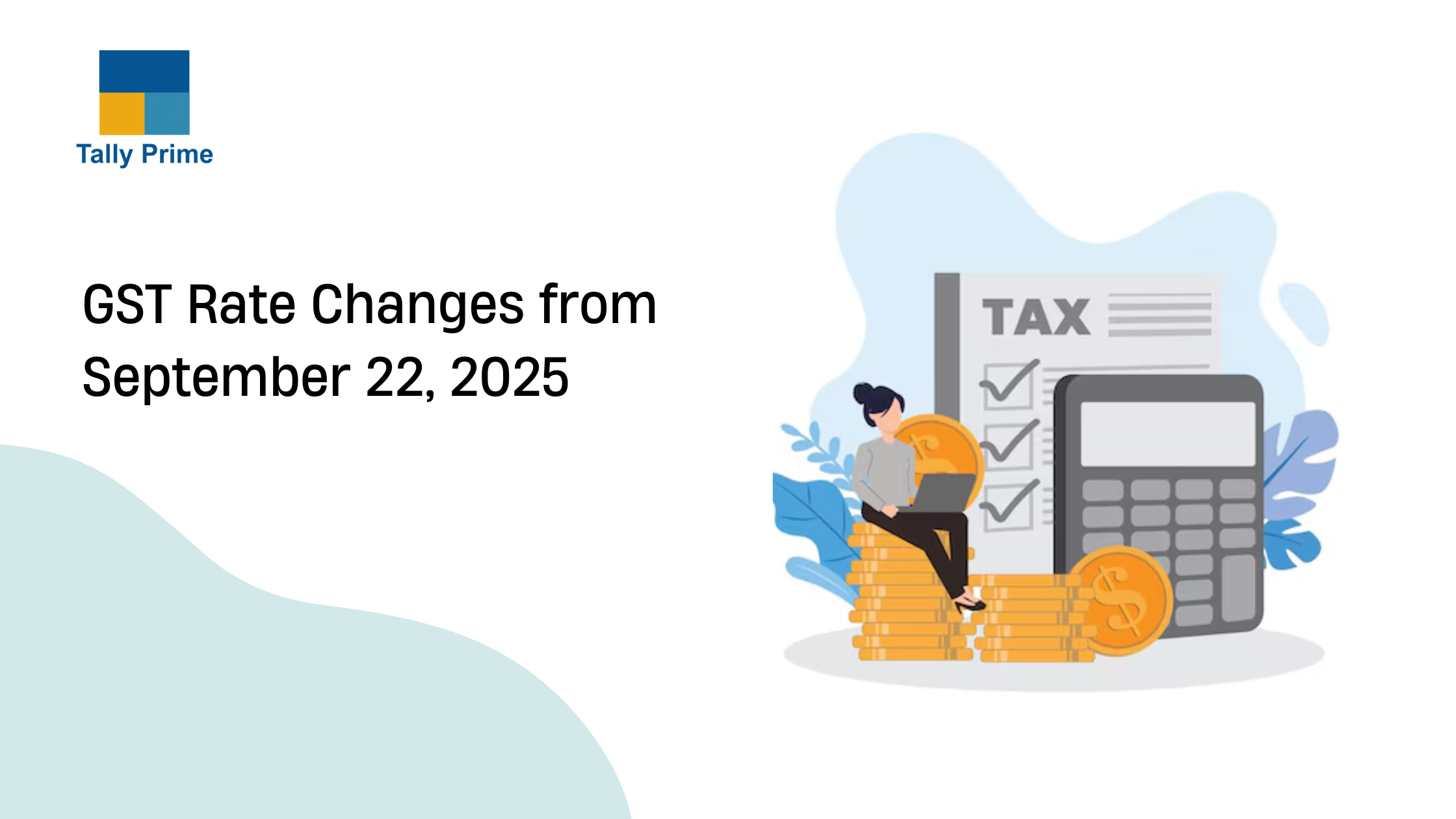GST Rate Changes from September 22, 2025 – Complete Guide for Business Owners
I. Introduction
India is shifting from a four-slab GST structure to a simplified three-slab system effective September 22, 2025. This major reform impacts businesses across sectors, aiming to streamline taxation, minimize confusion, and reduce classification disputes. The change ensures easier compliance, greater transparency, and a more efficient tax framework for all businesse
II. The New 3-Slab GST Structure (Effective 22nd Sept 2025)
-
5% – Essentials & mass-consumption goods
-
18% – Most goods & services
-
40% – Luxury & sin goods
-
Comparison with the previous 4-slab structure (5%, 12%, 18%, 28%).
-
Government’s rationale behind the change.
III. Key Business Impacts of the GST Rate Changes
- Adjustments in purchase and sales ledgers.
-
Pricing Adjustments
-
Impact on consumer pricing and profitability.
-
-
Industry-Wise Effect
-
Essentials (retail/FMCG)
-
Services sector
-
Luxury, automobiles, tobacco, etc.
-
-
Input Tax Credit (ITC) considerations
IV. Compliance Challenges After GST Revision
Updating tax rates across all items, ledgers, and groups means revising every product, service, or account in your system to reflect the latest GST changes. This ensures accurate billing, correct tax calculations, and compliance with government rules, while minimizing errors that could affect returns, audits, or overall financial reporting.
Errors like missing or incorrect GST rates can lead to serious compliance issues for businesses. A wrong tax rate applied on sales or purchases may result in mismatched returns, penalties, or loss of input tax credit. Timely detection and correction ensure smooth filing and avoid unnecessary financial or legal risks.
With the new GST rate changes, businesses must maintain precise reporting and thorough reconciliation to avoid penalties. Any mismatch between purchase, sales, or tax returns could lead to compliance issues. Accurate reporting ensures correct tax liability, smooth ITC claims, and builds transparency, helping businesses stay fully GST-compliant and audit-ready.
V. How TallyPrime Helps You Stay GST-Compliant from Day 1
With the new GST rate changes, businesses must maintain precise reporting and thorough reconciliation to avoid penalties. Any mismatch between purchase, sales, or tax returns could lead to compliance issues. Accurate reporting ensures correct tax liability, smooth ITC claims, and builds transparency, helping businesses stay fully GST-compliant and audit-ready.
TallyPrime’s auto-identification of missing or incorrect tax rates ensures error-free compliance by instantly scanning all items, groups, and ledgers. It highlights mismatches, missing entries, or outdated GST rates, allowing users to correct them in real time. This proactive feature minimizes filing errors, saves time, and ensures accurate GST reporting.
TallyPrime simplifies GST compliance with detailed reports by rate, HSN, or item, giving businesses complete visibility into tax structures. Whether you need to analyze transactions under a specific GST rate, verify HSN classifications, or review item-wise tax details, these reports ensure accuracy, reduce errors, and make compliance effortless.
Ensuring accuracy for GSTR-1, GSTR-3B, and other GST filings means recording correct tax rates, invoices, and HSN codes to avoid mismatches and penalties. With TallyPrime, businesses can auto-validate entries, reconcile data, and generate error-free returns, ensuring smooth compliance, timely filing, and confidence during audits or government scrutiny.
VI. Conclusion
The latest GST reform marks a significant step toward simplification, efficiency, and reduced disputes for businesses. Those who act quickly can smoothly adapt to the new 3-slab structure and avoid compliance risks. With TallyPrime’s powerful automation, updates are effortless, ensuring accuracy while you stay focused on scaling your business.



